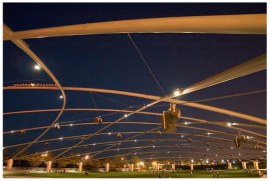 When I first began studying business in high school, organization structure options typically included versions of bureaucratic, matrix, functional or divisional structures. However, in recent years an increasingly unpredictable, constantly changing business environment has resulted in the need for more flexible organizations. Originally created in the late 1960’s by W.L. Gore Associates, the lattice (hierarchy free) organization structure is becoming more prevalent today.
When I first began studying business in high school, organization structure options typically included versions of bureaucratic, matrix, functional or divisional structures. However, in recent years an increasingly unpredictable, constantly changing business environment has resulted in the need for more flexible organizations. Originally created in the late 1960’s by W.L. Gore Associates, the lattice (hierarchy free) organization structure is becoming more prevalent today.
The lattice organization structure is characterized by self-management as this structure has no hierarchy and no defined leadership. Gore describes the lattice organization structure as one that involves:
‘Direct transactions, self-commitment, natural leadership, and lacks assigned or assumed authority.’
The lattice organization structure has been successful at Deloitte and could be considered to be suited to organizations similar to the ones I featured in my past posts on self-management and results-only work environments such as Morning Star and Best Buy’s corporate headquarters.
Here are the pros and cons of the lattice organization structure:
The Pros
- A lattice organization structure can facilitate the creation of an ideocracy where anyone in the organization can contribute ideas regardless of position and how long they’ve been with the company. The benefit of this is that the best ideas can prevail and organizations can benefit from ideas they may not have heard in more hierarchical organizations where lower level employees often have a more limited voice.
- Employees have greater freedom to cross train and learn different aspects of the business and expand their knowledge, skills and expertise by not being restricted to one specific functional area.
- A lattice organization structure can also enhance employee retention as employees are empowered by having an almost unlimited amount of learning and development opportunities.
- Organizations utilizing this flat organizational structure can achieve competitive advantage from increased flexibility to adapt faster to the changing environment.
The Cons
- Not all employees have the ability and self-discipline to thrive without management, creating the potential for a chaotic work environment. The flexibility of the lattice organization structure enables employees to shape their careers by working in different teams making roles hard to define. As a result the creation of policies, compensation and performance standards is challenging.
- Lattice organization structures have been most successful in new organizations. To transform from a hierarchical to a lattice organization structure is plagued by implementation challenges. As a result, organizations looking to become more flexible should look to incrementally change their structure, taking on some aspects such as self-managed teams; avoiding radical change.
Would a lattice organization structure work in your organization? Share your thoughts in the comments section below.




